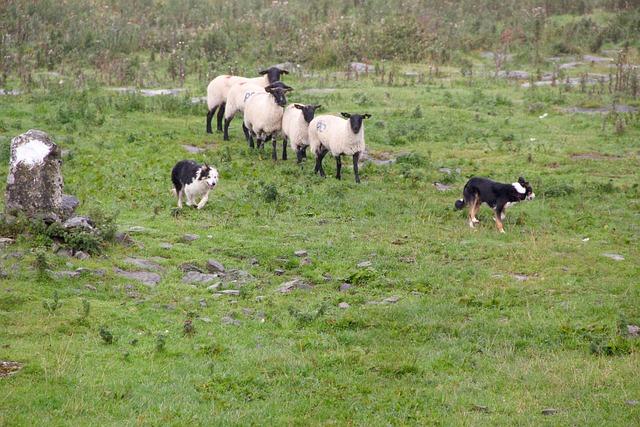Welcoming a dog into your home is a journey filled with joy, laughter, and the occasional challenge. One of the most rewarding skills you can teach your furry friend is the art of patience, especially when it comes to waiting at doors. Whether it’s to prevent a sudden dash into the street or to politely greet guests, training your dog to wait at doors is a vital lesson in discipline and safety. In this article, we will guide you through the best techniques to instill this important behavior in your canine companion. With a blend of positive reinforcement, consistency, and a sprinkle of love, you’ll find that teaching your dog to wait at doors not only enhances their obedience but also strengthens the bond you share. So, grab some treats, a leash, and let’s embark on this training journey together!
Understanding Your Dogs Behavior at Doorways
Doorways can be a point of excitement and curiosity for dogs, often triggering a burst of energy or anxiety. Understanding their behavior at these thresholds is crucial for effective training. Dogs may perceive doorways as gateways to new adventures, or they might feel the need to protect their territory. Observing your dog’s body language can offer insights into their mindset. Are they alert and focused, or are they tense and anxious? Recognizing these cues will help you tailor your training approach.
To train your dog to wait calmly at doors, it’s essential to establish clear boundaries and reinforce positive behavior. Here are some strategies to consider:
- Consistency: Use the same command each time you approach a door, ensuring your dog knows what is expected.
- Patience: Training takes time. Be patient and celebrate small victories with treats or praise.
- Positive Reinforcement: Reward your dog when they wait patiently, reinforcing the desired behavior.
- Practice: Regular practice in different settings will help solidify the behavior.
Remember, a calm and assertive approach will encourage your dog to view doorways as just another part of their daily routine, rather than a source of excitement or stress.
Creating a Consistent Command Routine
Establishing a routine is the cornerstone of successful dog training, especially when teaching your furry friend to wait patiently at doors. A consistent command routine helps reinforce the behavior you want to instill, making it second nature for your dog. Begin by selecting a simple, clear command such as “wait” or “stay.” Consistency is key, so use the same command every time you approach a door. Pair this verbal cue with a hand signal to further solidify the command in your dog’s mind.
- Choose a specific command: Stick to a single word or phrase to avoid confusion.
- Use visual cues: A hand signal or gesture can help reinforce the command.
- Practice regularly: Integrate the command into daily routines, such as walks or trips outside.
- Be patient: Remember, consistency and patience are crucial as your dog learns this new behavior.
Incorporate the command into daily activities, making it a part of your dog’s routine. Every time you approach a door, pause and give the command, rewarding your dog with praise or a treat when they successfully wait. Over time, your dog will learn that waiting at doors is not only expected but also rewarding, leading to a well-behaved and patient companion.
Positive Reinforcement Techniques for Success
Training your dog to wait patiently at doors is a vital skill that ensures both safety and good behavior. One effective method is to use positive reinforcement to encourage your dog to understand and follow this command. Start by using treats or a favorite toy as a reward. When approaching a door, ask your dog to sit. Once they comply, offer a treat or a toy, but do not open the door yet. This reinforces the idea that sitting is the desired behavior.
- Consistency is key: Repeat this routine every time you approach a door, ensuring your dog sits and waits before the door opens.
- Use verbal cues: Employ a clear command such as “wait” to help your dog associate the word with the action of staying put.
- Gradual increase in difficulty: Start with short waits and gradually increase the time your dog has to stay seated before receiving the reward.
- Positive affirmation: Always praise your dog verbally or with gentle pats when they follow the command correctly, reinforcing their good behavior.
Through patience and positive reinforcement, your dog will learn to wait calmly at doors, making entrances and exits a smoother experience for everyone involved.
Practicing Patience and Building Trust
Teaching your dog to wait patiently at doors is not just about training obedience; it’s about nurturing a bond built on trust and understanding. Start by using positive reinforcement, ensuring your furry friend associates the act of waiting with positive outcomes. Use treats or a favorite toy to reward them when they stay put. Consistency is key, so practice at different doors and at various times to help them understand the command applies universally.
- Start small: Begin with short waits and gradually increase the duration as your dog becomes more comfortable.
- Use verbal cues: Words like “wait” or “stay” should be clear and consistent every time.
- Body language matters: Stand calmly and confidently, showing your dog that there is no rush.
- Patience is a virtue: If your dog struggles, take a step back and reduce the waiting time, ensuring they feel successful.
Remember, this is a journey that strengthens your relationship. As your dog learns to wait, they are also learning to trust you, knowing that every command is for their well-being and safety. Celebrate small victories along the way, and enjoy the process of growing together.

